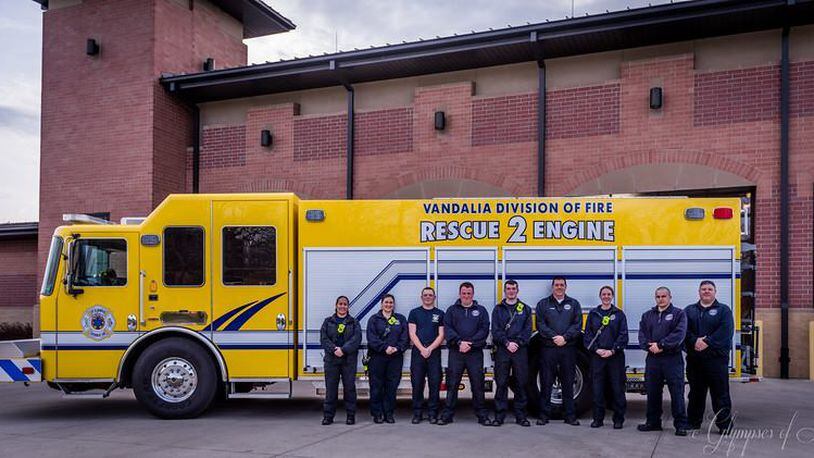The city of Vandalia’s dispatch center submitted a compliance timeline and the communications staff complete the required training on June 21. The compliance was accepted June 26.
The staff members began emergency medical dispatch (EMD) as they completed the training.
EMD is a systematic program of handling medical calls, according to Lt. Ben Walker.
“Trained telecommunicators, using locally approved EMD Guide-cards, quickly and properly determine the nature and priority of the call, dispatch the appropriate response, then give the caller instructions to help treat the patient until the responding EMS units arrive,” Walker said.
The certification allows dispatchers to get appropriate information out to responding police and fire crews before they arrive on scene and to bring in the right equipment for the job.
“I believe this added service from our 911 center greatly enhances our fire/EMS response and brings another layer of fire/emergency medical fire & medical first response to our service delivery model,” said Vandalia Fire Chief Chad Follick.
In order for dispatchers to become certified, they have to complete 32 hours of classroom instruction and take an exam that they must pass.
The steps that are taken to become a certified dispatcher include:
— 40 hours of telecommunicator training prior to EMD training
— CPR and First Aid certified
— Additional hours of over-the-phone instructions on CPR and First Aid
“We’d like our citizens to know that answering the dispatcher’s questions does not delay the fire department’s response to your medical emergency,” Walker said. “Answering the questions quickly and accurately will actually help us respond for effectively and efficiently.”
The support services manager for Vandalia became a certified instructor of EMD, which keeps training costs down because it is in-house.
“The pre-arrival instructions the dispatcher gives you are to assist and prepare you for the police & fire department’s arrival,” Walker said.
EMDs will have seven to 10 percent of their calls evaluated for quality assurance and complete 24 hours of continuing education every two years to become re-certified.
The Vandalia Communications Center only dispatches for the city’s police and fire departments.
When you call 9-1-1, the first thing a dispatcher needs to know is the address where help is needed and what your medical emergency is that caused the call, Walker added.
Many smaller dispatch centers in Ohio did not have an EMD certification prior to the new compliance, but all centers should be EMD certified now, officials said.
About the Author
